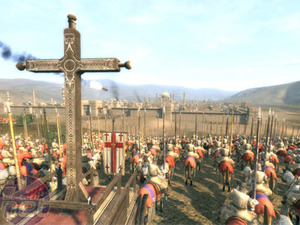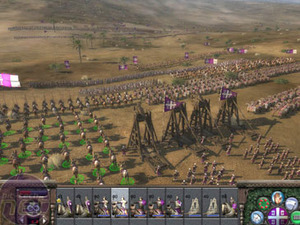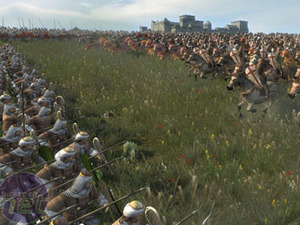Introduction
What is the greatest RTS game of all time? It's a tough one to call in a genre stuffed to the rafters with classics. Command & Conquer, Starcraft, Warcraft, Age of Empires and more recently, Company of Heroes would all be vying for top spot. Over the past decade or so the RTS genre has been a consistent feast of graphics, immersive gameplay with heavy doses of death and destruction thrown in for good measure.Yet, until Shogun Total War came along back in June 2000, I still felt the 'great' RTS games to be slightly lacking. Up until that point RTS games were fairly one dimensional; collect the resources, build your forces and then destroy the enemy. Unlike games like Half Life and Deus Ex, which had blended the FPS genre with 'Platforming' and 'RPG' style mechanics, the RTS was left dwindling a little, stuck in its old ways struggling for that spark of innovation.
All this was changed by the addition of the Risk style board that is now familiar in Total War games. Resource gathering became a deeper issue than chop-the-trees-down and mine-the-gold of days gone by. Now you had to manage your cities, manoeuvre your armies, control spies, ships and keep your heirs from being wiped out. Creative Assembly added a whole new layer to the RTS onion making the experience far sweeter, far more rewarding and far more addictive.
This would have fallen flat on its fat face had it not been for the brilliant battle mechanics to go alongside the new 2D portion and thankfully the Total War series hasn't disappointed. Each game has provided increasingly epic, cinematic battles that would have you saying "At my signal, unleash hell" alone to your screen in a darkened room. Every game in the series built on the last and, in a manner not dissimilar to Football Manager, dedicated fans kept coming back for more of the same with added dollops of war-like goodness thrown on top.
The worry for the Total War franchise is that this formula could get stale. Medieval 2 revisits the middle ages again, except this time everything is running on the engine that powered the brilliant Rome: Total War. Tweaks have been made here and there, graphics are promised to be sharper, new city management elements have been introduced and new units are available for you to manipulate. Does Medieval 2 continue the tradition of greatness for the Total War series? Read on to find out.
My kingdom for a horse
Medieval 2's initial options will be familiar to those who have done a bit of Total Warring in the past. For those who want to jump straight into a battle there is a selection of historical scenarios to choose from including the showpiece of 1066 – The Battle of Hastings. These skirmishes are introduced by a voice over, giving you a context for why the clash actually took place and potential strategies for victory. You can take on either side and generally there will be a very different tactical requirement to emerge victorious.The historical battles are really only a sideshow to the main event – the grand campaign. By selecting this option you open up the 30-40 hour main game. You start by selecting a nation, one of England, France, Venice, Denmark and the Holy Roman Empire. Each nation has its own defining characteristics and geographical advantages and disadvantages. For instance, England is easier to defend due to its status as an island and the water that surrounds it - but this also makes expansion slightly more difficult. On the other hand, the Holy Roman Empire, sitting right in the heart of Europe, is under threat from every direction but can also expand in any direction. Weighing all the options up I took the patriotic route and became the King of England - Scotland and France watch out.
The first thing I noticed that makes Medieval 2 different from previous games in the series is the two different types of city you now have. Every city can either be focused on building your military forces or building your economic capacity - simply put, you decide whether a place is a town or a castle. To survive in the game you'll need a healthy mixture of both and the more astute Emperors and Kings will do their best to protect their valuable towns with their fortified castles.
Once you've set up your cities its time to start expanding. To do that, though, you'll need a steady influx of cash. Here we introduce the first new character – the merchant. The merchant costs as much as an assassin but is certainly more valuable. Each financial-focused city can recruit one (and one alone, more about that later) merchant, and once you are in possession of him he needs to be shipped out to areas of the map where there are valuable resources to your Kingdom. My merchant quickly trundled off to Cornwall, started sending tin back to London and started bring in a healthy amount of cash on each turn.
The merchant is unique in that he can happily operate in any region, whether you have conquered it or not, without causing any diplomatic problems. I could quite happily march into France and start sending back all their wine, which I did pretty promptly, to make a handsome profit. The only way the French can stop me is by sending another merchant to try and muscle me out of business. The merchant doesn't revolutionise the game but it does add another level of complexity that increases the involved feeling.

MSI MPG Velox 100R Chassis Review
October 14 2021 | 15:04














Want to comment? Please log in.